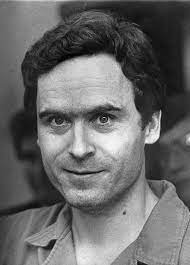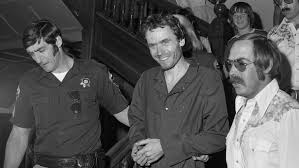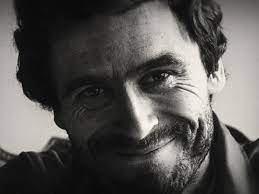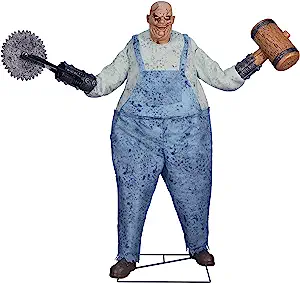Was one of the most prolific serial killers in the USA. He confessed to 36 murders, but nobody really knows how many had been committed or when he began his legacy of horror; the true total could be higher.
Despite the appalling nature of his crimes, who kidnapped, raped and murdered young women and girls. Bundy became something of a celebrity, particularly following his escape from custody in Colorado in 1977. During his trial his charm and intelligence drew significant public attention. His case inspired a series of popular novels and films devoted to serial murder.
When the murders began

At age 27, shortly after midnight on January 4, 1974, Bundy entered the basement apartment of 18-year-old Karen Sparks, a dancer and student at the University of Washington. There he beat her repeatedly with a metal rod and sexually assaulted her with it. She remained unconscious i the hospital for ten days and although she survived, she was left with physical disabilities.
In the early hours of February 1, Bundy broke into the the basement of Lynda Healy, a UW undergraduate. He beat her unconscious; dressed her in blue jeans, a white blouse, and boots, and carried her away.
During the first half of 1974, female college students disappeared at the rate of about one per month. Locations varied from Vancouver, WA to Seattle, WA. Other female Central Washington students later came forward to report encounters of a man wearing a sling, asking for help to carry a load of books to his brown or tan Vaolkswagon Beetle.
Investigators from Seattle and King Country grew increasingly concerned. The missing women had nothing in common apart from their appearance: young, attractive, white college students with long hair parted in the middle. On June 1, another young women, Brenda Ball, 22, went missing and last seen talking to a brown-haired man with his arm in a sling.
Reports of the brutal attack of seven missing women appeared prominently in newspapers and on television throughout Washington and Oregon.
Idaho, Utah, Colorado
In August 1974, Bundy received an acceptance from the University of Utah Law School and moved to Salt Lake City. A new string of homicides began the following month.
On September 2, he raped and strangled a still-unidentified hitchhiker in Idaho, then either disposed of the remains immediately in a nearby river or returned the next day to photograph and dismember the corpse.
In October, two other 17-year-old girls were found naked, both beaten, raped, sodomized, and strangled with nylon stockings.
Bundy’s girlfriend at the time, Kloepfer, who he left in Seattle, called police on three occasions reporting of the missing girls surrounding Salt Lake City and her suspicions of Bundy.

In 1975, Bundy shifted his criminal activity eastward to Colorado. On January 12, a 23-year-old registered nurse named Caryn Campbell disappeared and her naked body was found a month later. She had been killed by blows to her head from a blunt instrument that left distinctive linear grooved depressions on her skull; her body also bore deep cuts from a sharp weapon.
Two other women bodies were found before Bundy lured a 12-year-old girl, Lynette Culver from her Junior High School. He drowned her in his hotel room, then disposed of her body in a river.
His arrest
On August 16, 1975, Bundy was arrested by Utah Highway Patrol after cruising a residential area in his Volkswagon Beetle during predawn hours, and fleeing at high speed after seeing the patrol car. The officer searched his car and found a ski mask, a second mask fashioned from pantyhose, a crowbar, handcuffs, trash bags, a coil of rope, an ice pick, and other items initially assumed to be burglary tools. He was released on his own recognizance.
While placed on 24-hour surveillance, three detectives flew to Seattle to interview Kloepfer. She told them that in the year prior to Bundy’s move to Utah, she had discovered objects that she “couldn’t understand” in her house and in Bundy’s apartment. These items included crutches, a bag of plaster of Paris that he admitted stealing from a medical supply house, and a meat clever that was never used for cooking. Additional objects included surgical gloves, an Oriental knife in a wooden case that he kept in his glove compartment, and a sack full of women’s clothing. She said Bundy became “very upset” whenever she considered cutting her hair, which was long and parted in the middle. She would sometimes awaken in the middle of the night to find him under the bed covers with a flashlight, examining her body.
In September, Bundy sold his Volkswagen but Utah police impounded it, and FBI technicians found hair strands matching three different victims who had never met one another.
He was only charged with aggravated kidnapping and attempted criminal assault and was out on $15,000 bail, paid by his parents. In February 1976, he stood trial for the kidnapping and was found guilty and sentenced to one to 15 years in the Utah State Prison.
He escapes

On June 7, 1977 Bundy was transferred to Aspen, Colorado for a preliminary hearing for a murder. He had elected to serve as his own attorney, and as such, was excused from wearing handcuffs or leg shackles. During a recess, he asked to visit the library to research his case. He opened a window and jumped to the ground from the second story, injuring his right angle.
He broke into a hunting cabin and stole food, clothing, and a rifle. He got lost in the forest after leaving the cabin and wandered aimlessly for two days. A few days later he stole a car and drove back to Aspen, where two police officers notice his car weaving and pulled him over. He was a fugitive for six days.
Back in jail in Glenwood Springs, Bundy began planning for his next escape. He got a hacksaw blade from other inmates and sawed a hole about one square foot in his ceils ceiling. Having lost 35 pounds he was able to wiggle through and explore the crawl space above.
On December 30, with most of the jail staff on Christmas break. He climbed into the crawlspace and broke through the ceiling into the apartment of the chief jailer, who was out for the evening. He walked out the front door to freedom.
The escape was not discovered until noon the next day, seventeen hours later.
Florida
In the early hours of January 15, 1978, Bundy gained access to a sorority house through a rear door. Beginning at about 2:45 a.m. he bludgeoned Margaret Bowman, 21, with a heavy piece of oak firewood as she slept, crushing her skull. He then strangled her with a nylon stocking and ripped her underwear off with such force that friction burns were found on one of her thighs. After killing Bowman, he walked directly across the hall and entered the bedroom of 20-year-old Lisa Levy, beating her unconscious and strangling her. Bundy bit deeply into Levy’s left buttock and through one of her nipples, nearly severing it from her right breast. Using a bottle of hair mist Levy had in her room, he raped her vaginally and anally in an assault so violent that it ruptured her internal organs. In an adjoining bedroom he attacked Kathy Kleiner, breaking her jaw and deeply lacerating her shoulder; and Karen Chandler, who suffered a concussion, broken jaw, loss of teeth, and a crushed finger. Chandler and Kleiner survived the attack.
Within the next hour, Bundy made his way to a duplex house eight blocks away, where he approached the apartment’s basement window and climbed through under the cover of darkness. Finding FSU student Cheryl Thomas asleep in her bed at around 4:00 a.m., Bundy viciously attacked her, dislocating her shoulder as well as fracturing her jaw and skull in five places. She was left with permanent deafness and equilibrium damage that ended her dance career. Thomas’ neighbors in the rooms adjacent overheard the racket and phoned the police, who discovered her lying in bed badly beaten.
On February 12, he was stopped by a police officer, after his check of wants and warrants he noticed the car was stolen and told Bundy he was under arrest. Bundy kicked Lee’s legs out from under him and took off running. Lee fired two warning shots, then gave chase and tackled him. The two struggled over Lee’s gun before the officer finally subdued and arrested Bundy.
Trial

Bundy stood trial for homicides and assaults in June 1979. The trial was covered by 250 reporters from five continents and was the first to be televised nationally in the United States.
The jury deliberated for less than seven hours before convicting Bundy on July 24, 1979, for murder, three counts of attempted first-degree murder, and two counts of burglary. Trial judge Edward Cowart imposed death sentences for the murder convictions.
Death
Bundy was executed in the Raiford electric chair on January 24, 1989, at age 42. Hundreds of revelers sang, danced and set off fireworks in a pasture across from the prison as the execution was carried out.





